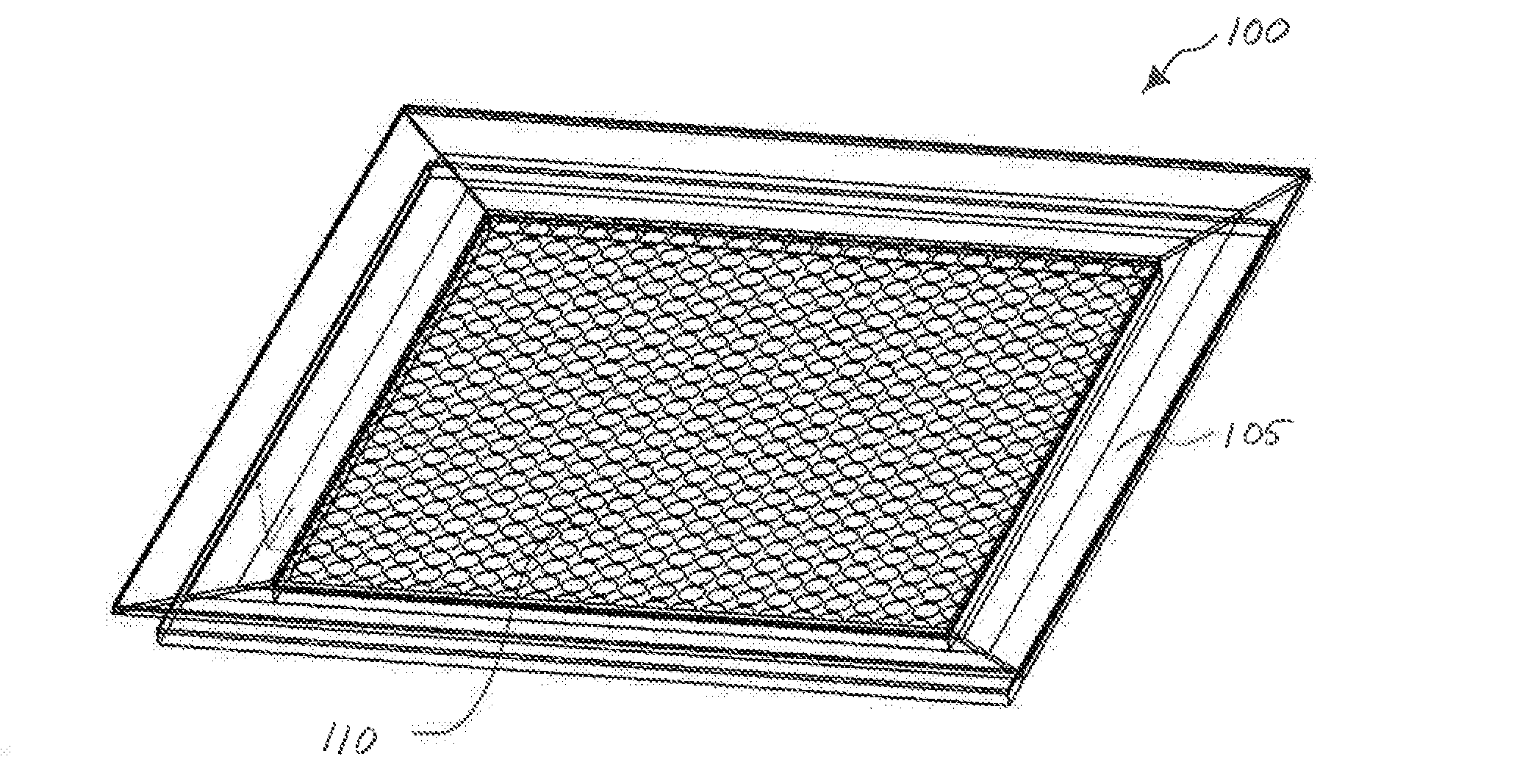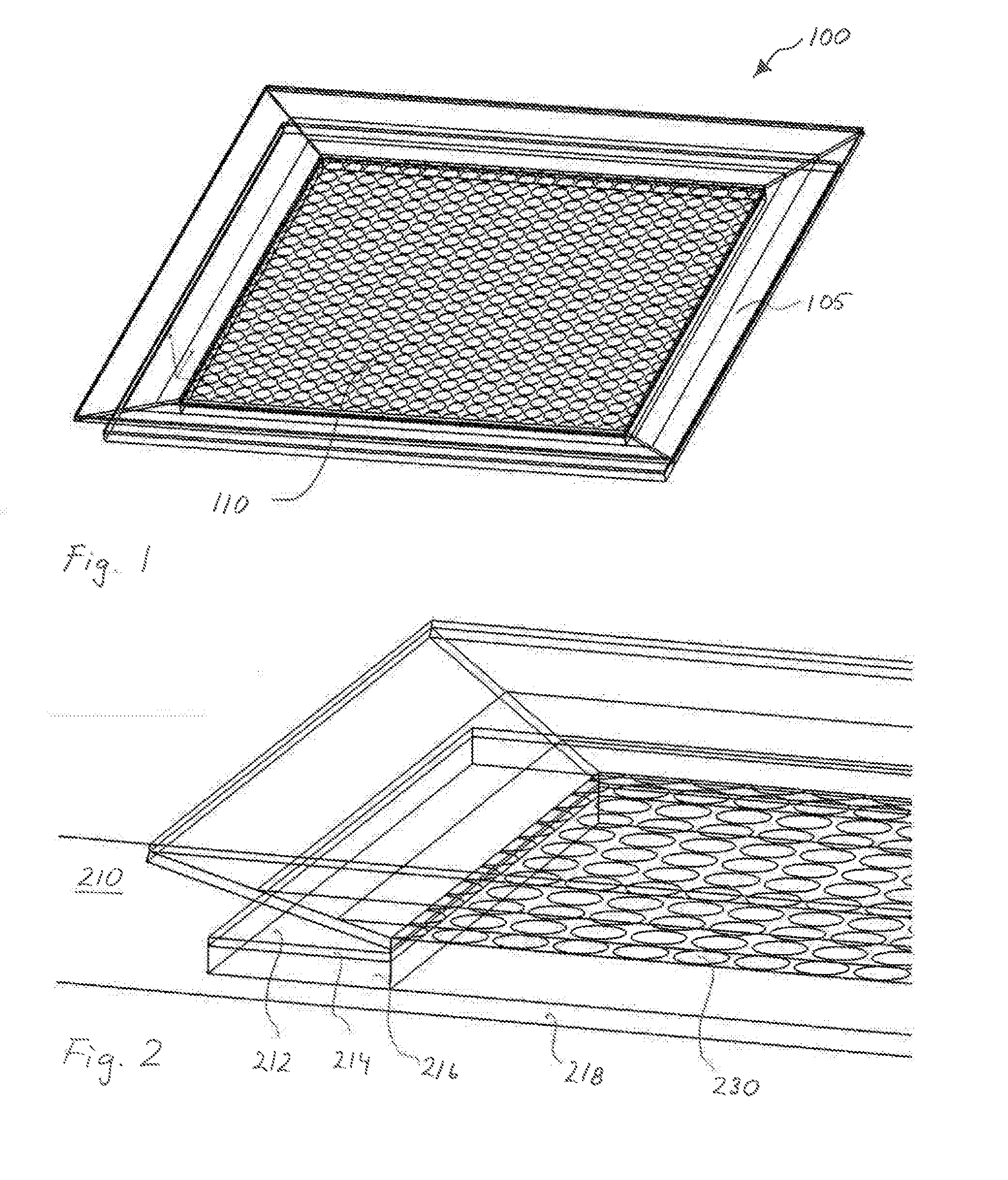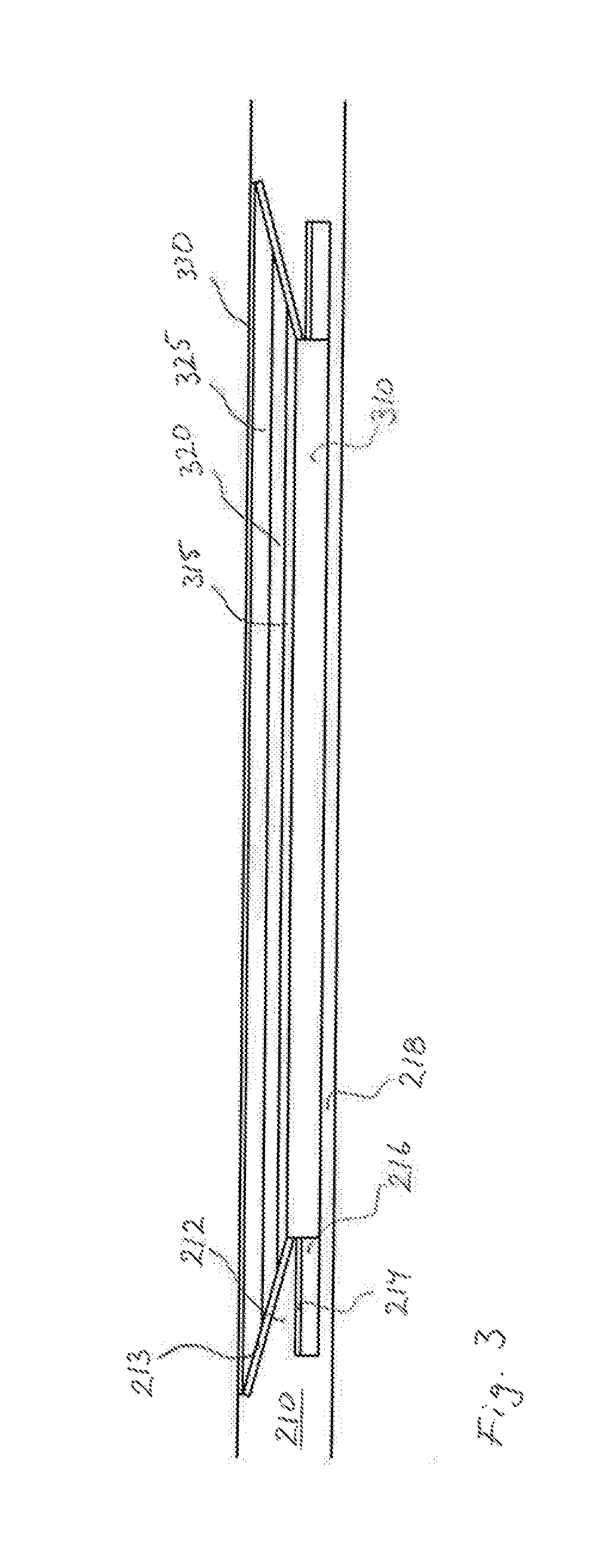Method for integrating an antenna with a vehicle fuselage
a technology of array antennas and fuselages, applied in the field of vehicle stealth technology, can solve the problems of reducing the possibility of physically angling the surface of the aperture away from the threat sector, difficult to handle, and inability to operate within the antenna operational band of broadband array antennas
- Summary
- Abstract
- Description
- Claims
- Application Information
AI Technical Summary
Benefits of technology
Problems solved by technology
Method used
Image
Examples
examples
[0064]Particularly good results, or good compromises have been achieved at simulations or tests with the following parameters:[0065]L1: 0.5 to 4 wavelengths at the highest operating frequency of the antenna.[0066]L2: 0.5 to 3 wavelengths at the highest operating frequency of the antenna.
[0067]It has also been found that RCS will be reduced further the longer the transition is made, i.e., with a greater value of the maximum of L1 and L2 the lower the RCS, other parameters unchanged.
[0068]As the transition and the frame surrounds the antenna aperture it will occupy a large area, in particular if maximum of L1 and L2 is large. This may not be acceptable due to limited hull area, which is particularly true for aircraft. This may be a factor limiting maximum of L1 and L2. It has been found that when maximum of L1 and L2 is greater than 3 to 4 wavelengths at highest operational frequency, the further improvement in RCS when maximum of L1 and L2 is increased further is not so pronounced. T...
PUM
 Login to View More
Login to View More Abstract
Description
Claims
Application Information
 Login to View More
Login to View More - R&D
- Intellectual Property
- Life Sciences
- Materials
- Tech Scout
- Unparalleled Data Quality
- Higher Quality Content
- 60% Fewer Hallucinations
Browse by: Latest US Patents, China's latest patents, Technical Efficacy Thesaurus, Application Domain, Technology Topic, Popular Technical Reports.
© 2025 PatSnap. All rights reserved.Legal|Privacy policy|Modern Slavery Act Transparency Statement|Sitemap|About US| Contact US: help@patsnap.com



